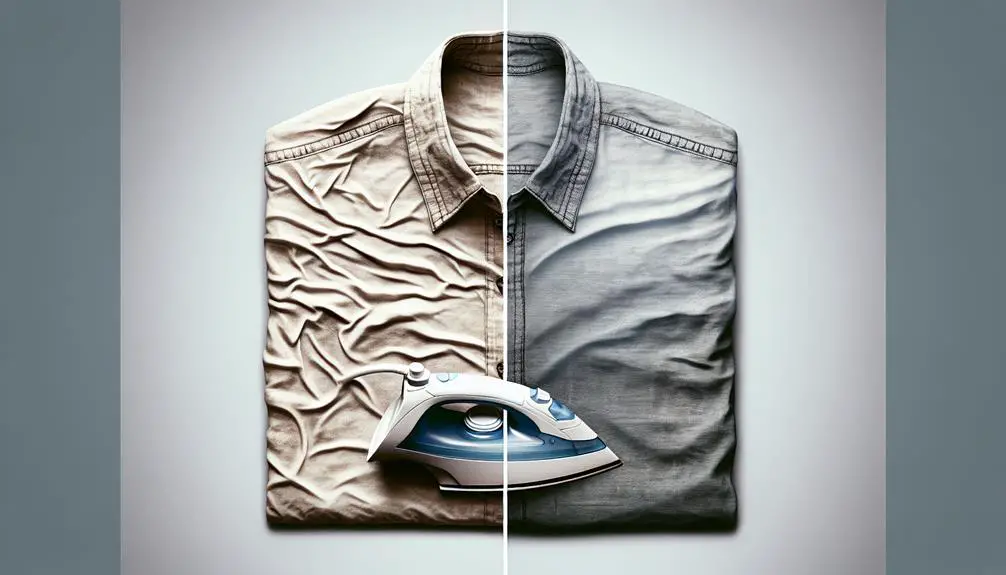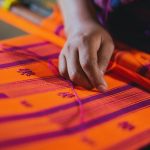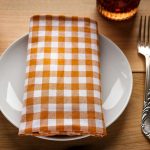I iron linen to make it look sharper and last longer. Consider the quality, care label, and occasion before ironing. I set my iron to high heat and use a steam iron for best results. Start ironing on the wrong side and hang to dry after. Alternatives like steaming or tumble drying can save time. Hang damp linen to prevent wrinkles or spritz with water before ironing. Using a towel underneath helps too. Remember, what you choose depends on your garment and personal preference.
Table of Contents
Key Takeaways
- Ironing linen smooths out wrinkles and creases for a neater appearance.
- Enhances the natural sheen and texture of linen fabric.
- Helps maintain the structure, shape, and lifespan of linen garments.
- Evaluate fabric quality, weave, care label instructions, and style preferences before ironing.
- Consider alternatives like steamers or tumble drying to save time and effort while keeping linen sharp.
Pros and Cons of Ironing Linen
Ironing linen can make a noticeable difference in the appearance and feel of the fabric. When you iron linen clothes, you can smooth out wrinkles and creases, giving them a neater appearance. Linen garments, in particular, benefit from ironing as it enhances their natural sheen and smooth texture. Not only does ironing make your linen clothing look more polished, but it also helps maintain the fabric's structure and shape over time, extending its lifespan.
In formal settings or professional environments, ironing linen is often preferred to achieve a crisp and polished look. It shows attention to detail and gives off a more put-together vibe. On the flip side, avoiding ironing linen can result in a more relaxed and casual appearance, with a natural, wrinkled texture that some people find charming. Ultimately, the decision to iron linen clothing depends on the desired look and the occasion.
Factors to Consider Before Ironing Linen
Considering the fabric quality and weave of your linen garment is vital before deciding whether to iron it. Linen comes in various weaves, from loose to tight, affecting how prone it is to wrinkling. Checking the care label for specific ironing instructions can prevent any accidental damage to the delicate fabric. It's also essential to evaluate your personal style preferences and the desired look of the garment when contemplating ironing. Evaluating the occasion and setting where the linen piece will be worn helps determine if ironing is necessary for a polished appearance. Additionally, taking into consideration the time and effort required to iron linen garments based on your individual care routines and maintenance preferences is key to keeping your linen looking its best. Here's a table to help you weigh these factors:
| Factors to Consider | Description |
|---|---|
| Fabric Quality & Weave | Evaluate how prone the linen is to wrinkling based on its weave. |
| Care Label Instructions | Follow specific ironing guidelines to avoid damaging the delicate fabric. |
| Style Preferences | Consider your desired look and personal style when deciding to iron. |
| Occasion | Determine if ironing is needed based on the formality of the event. |
| Maintenance Effort | Assess the time and effort required to iron based on your care routine. |
Best Practices for Ironing Linen
Before I get into ironing linen, let's talk about the best practices that can make this task a breeze. Here are some tips for effectively ironing your linen garments:
- Set the iron to high heat: To achieve the best results, use a high heat setting, ideally around 445°F/230°C, specifically designed for linen fabrics.
- Utilize a steam iron: Make sure to use a steam iron with a linen setting. The steam will help to remove wrinkles more efficiently from your linen garments.
- Start ironing on the wrong side: Begin by ironing your linen garments on the wrong side to prevent any potential scorching. Focus on heavier areas first for a smoother finish.
- Use a terry cloth towel: Place an old terry cloth towel under the linen garment on the ironing board. This will provide extra protection and help in achieving a wrinkle-free finish.
After ironing, hang your linen in an uncrowded space to dry completely before wearing.
Alternatives to Ironing Linen
When pressed for time, a steamer can be a handy alternative for keeping your linen garments wrinkle-free. I find it super convenient to use my steamer on my linen shirts and pants, especially when I'm rushing out the door. Simply hang them to dry after steaming, and they look crisp and neat. For items like linen shirts with intricate button plackets, a steamer is a lifesaver.
If you're dealing with larger linen items like sheets, tossing them in the dryer on low for a quick 10-minute tumble before hanging them to dry can also help banish wrinkles. This method works wonders for achieving that smooth, wrinkle-free appearance without the need for ironing.
Additionally, for a polished look without the full ironing process, using a flat iron on collars and hems of linen garments can provide a quick fix. Remember, linen does naturally wrinkle easily, so these alternatives can save you time and effort while keeping your garments looking sharp.
Wrinkle-Prevention Tips for Linen
To keep your linen garments looking smooth and wrinkle-free, incorporating simple wrinkle-prevention techniques can make a significant difference in maintaining their pristine appearance. Here are some tips I've found really helpful:
- Hang damp linen items: Hanging your linen clothes to dry can reduce wrinkles and maintain that relaxed, natural appearance that linen is known for.
- Spray a little water: Lightly spraying water on dry linen items can help relax creases and keep them looking fresh without the need for ironing.
- Use a towel under the linen: When ironing linen clothes, placing a towel underneath can help prevent a shiny finish on the fabric.
- Opt for air drying: Avoid tumble drying your linen items as air drying can help prevent excessive wrinkling and maintain the qualities of linen.
Frequently Asked Questions
Is It Necessary to Iron Linen?
Ironing linen depends on the desired look. While some prefer the natural crinkle for a relaxed vibe, ironing can create a polished appearance, especially for formal occasions. It's a personal choice based on style preference.
Is It OK to Wear Wrinkled Linen Men?
Wearing wrinkled linen is totally fine for a laid-back vibe. Embracing the natural wrinkles adds character and suits casual settings. Opting out of ironing maintains the fabric's charm and breathability, perfect for a relaxed, carefree style.
Is It Better to Steam or Iron Linen?
I prefer steaming linen over ironing. It's gentle, quick, and doesn't risk damaging the fabric. Steaming relaxes wrinkles effectively, giving a natural look. However, ironing can provide a crisp finish if that's your preference. Ultimately, it depends on personal style and garment care needs.
Will Ironing Shrink Linen?
Ironing linen can shrink it if done improperly. High heat tightens fibers, causing shrinkage. To prevent this, follow care instructions, use a steam iron on a linen setting, and avoid excessive heat. Proper technique is key.
- Harold Fabric Storage Ottoman Chamois by Christopher Knight Home - June 22, 2025
- Boltaflex Heritage Chamois 535882 by Omnova Fabric: A Review - June 22, 2025
- How Does Chamois Fabric Feel Compared to Other Fabrics? - June 22, 2025







